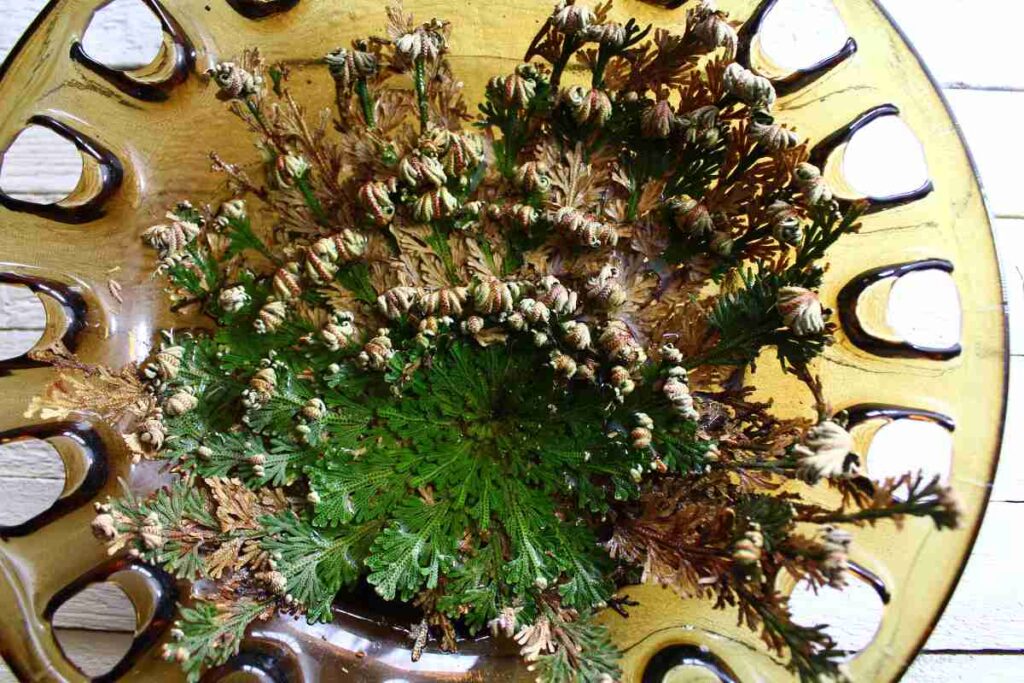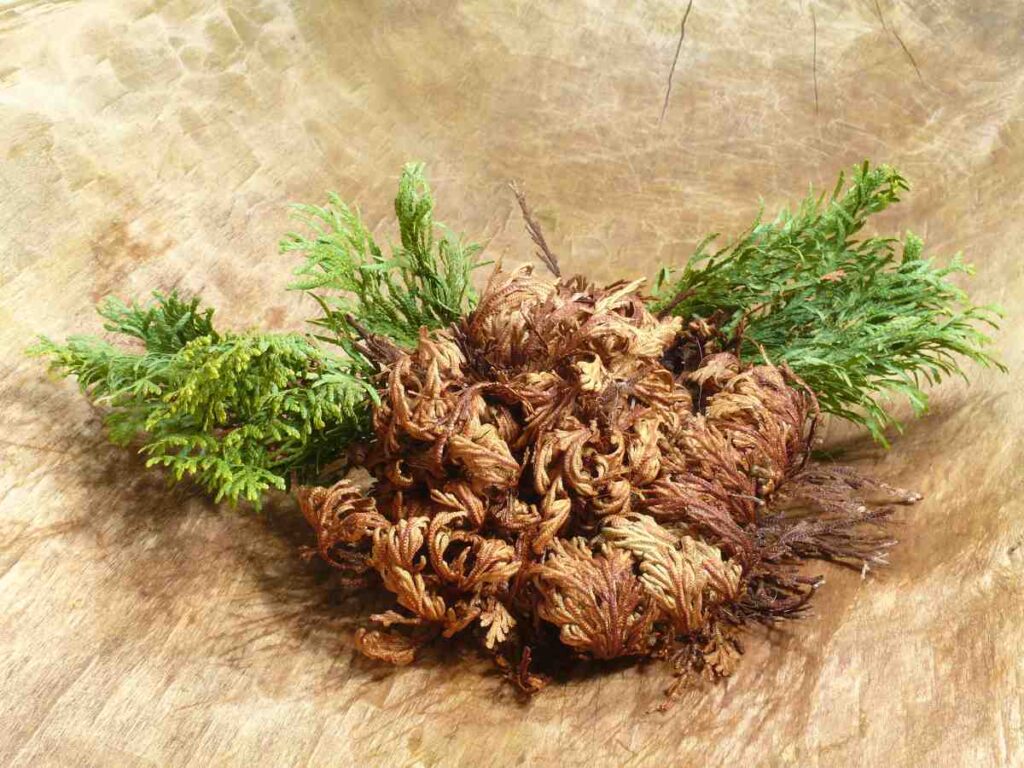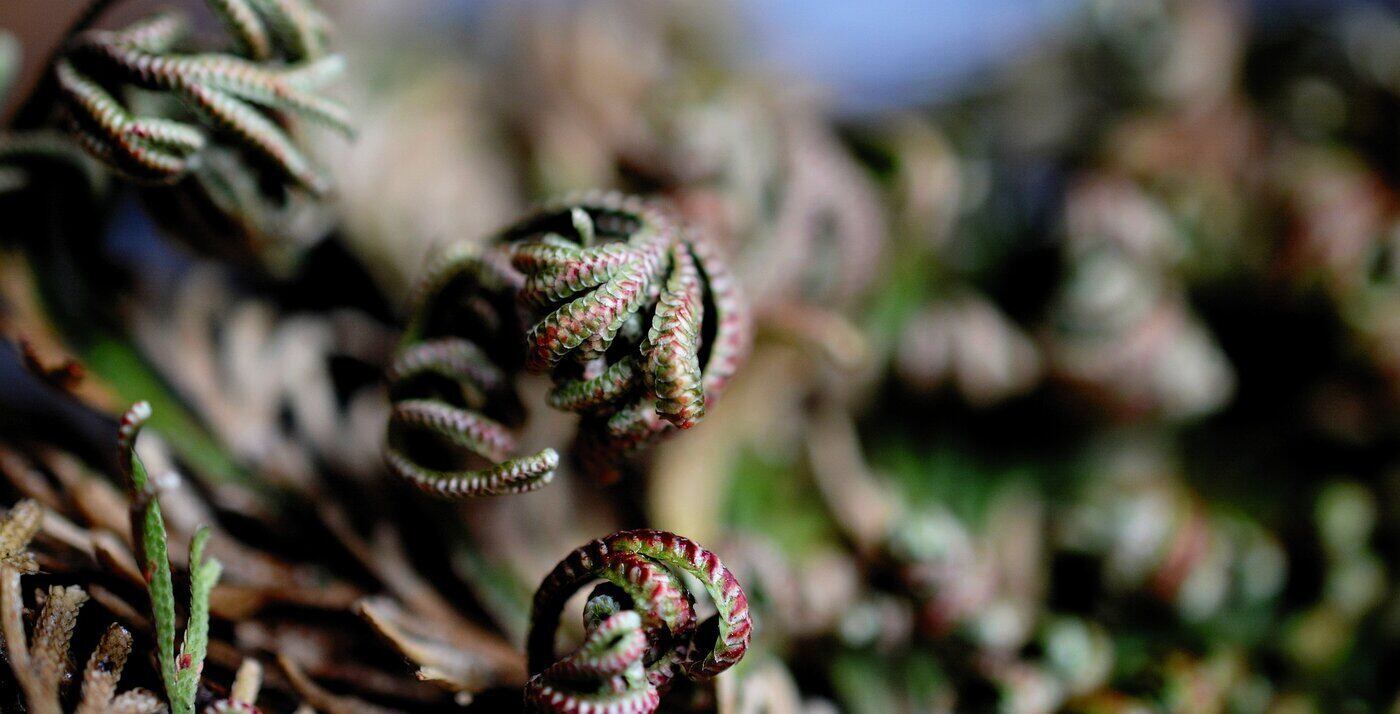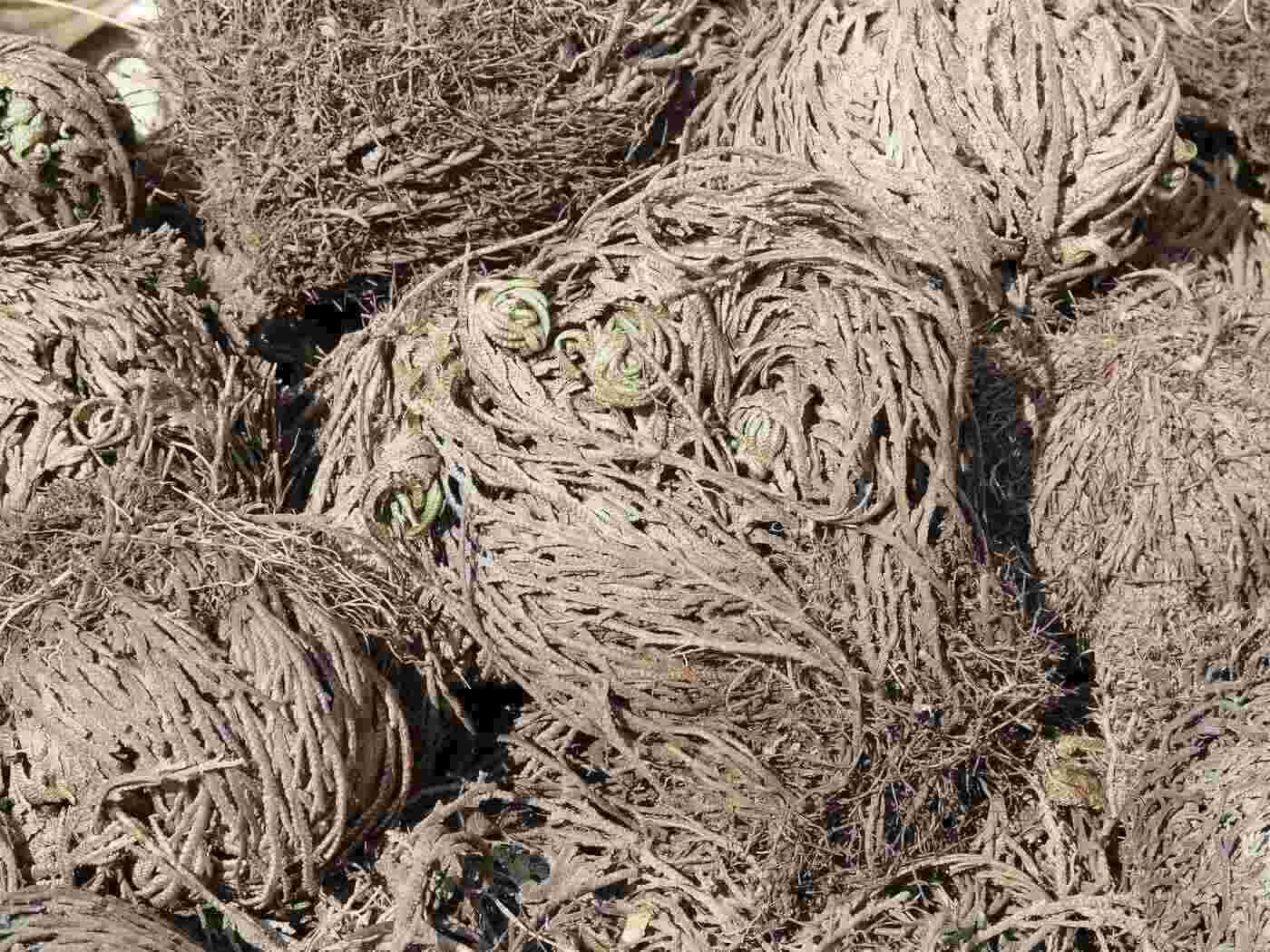The Rose of Jericho is one of the most buck wild plants you can keep in your home. Its resemblance to an actual rose is slight. That’s something to keep in mind so that if you buy one, you will not be disappointed. Its biology and history, however, make this plant a lot more interesting than the common rose.
What is the Rose of Jericho?
In their native habitats, these mosses wither and curl up into a dry ball when conditions are too dry. They then blow away and drift about like little tumbleweeds until they find a source of water. By all appearances they look dead, but once they find water, they uncurl, turn green, and spring back to life, earning them the name “resurrection plants.”
What is the Rose of Jericho Used For?
Thanks to its unique character that symbolizes transformation, the resurrection plant has become popular for spiritual purposes. But it has also been used for a variety of other purposes, including:
- For protection, blessing and purification
- To ward off negative energies, bring peace and abundance
- As a good luck charm to bring good fortune and abundance
- To induce labor and protect the mother and baby
- As a traditional medicine treatment to improve health conditions, such as arthritis pain, menstrual cramps and the common cold
A Too Short History of The Rose of Jericho

It’s probably clear by now why religious and spiritual traditions might be interested in the Rose of Jericho. Its ability to be reborn dovetails nicely with stories of resurrection and renewal found in many religious traditions.
That religious interest, coupled with the fact that this plant can go literal years without water and not die, has moved this plant around the globe in really remarkable ways. As it’s spread around the world, it’s come to feature in the lore and practices of traditions ranging from Judaism to Wicca.
True Rose of Jericho
There are two plants that share the Rose of Jericho name. Anastatica heirochuntica is the rarer true Rose of Jericho, and is native to Western Asia and the Middle East. It’s sold in souvenir shops as a holy relic to pilgrims travelling to the Holy Land. Religious scholar Suzy Knight explains that this practice has been going on since “the mid-fourteenth century,” when the plants “were sold to pilgrims as souvenirs by the Bedouin.” The plant was highly prized for its miraculous ability to die and be reborn and found a place in Judaic, Islamic and Christian traditions.
False Rose of Jericho
Selaginella lepidophylla is known as false Rose of Jericho. This one is the more common (and more attractive) houseplant. It hails from the Chihuahuan desert. Horticulturalist Chris Reynolds suggests that Spanish missionaries used the false Rose of Jericho to demonstrate concepts of spiritual rebirth to Native Americans. Those Indigenous peoples may in turn have introduced the plant to enslaved African American populations in the Southeastern U.S.
Between missionary activity and Native American trading, these plants travelled from the desert to feature in the African American and syncretic spiritual traditions of the Southeastern U.S. and Caribbean islands. The Rose of Jericho’s travels make for an incredible story.
A plant with a story this long deserves more than one name. In fact, the Rose of Jericho has several monikers, including resurrection plant, resurrection flower, Jericho Rose, resurrection fern, Maryam’s flower and Kaff Maryam.
Rose of Jericho Spiritual Uses
Because of its miraculous abilities, Rose of Jericho metaphysical properties have been assumed by religious traditions around the world. And it’s not difficult to imagine why religious folks would assign the Rose of Jericho spiritual powers, given that the resurrection plant seems quite capable of defying death.
Rose of Jericho magical uses are often the same today as they were hundreds of years ago, and are usually related to revival, purification, blessing and protection. Monotheistic religions like Islam and Christianity associate the plant with Mary and therefore assign the Rose of Jericho magical properties of protection for women and babies during childbirth.
Which is not to say that contemporary Wiccans are all familiar with Rose of Jericho witchcraft or that modern Catholics or Muslims typically have a Rose of Jericho plant in the delivery room. But if this plant was in a delivery room, protection would be what it was there for.
Let’s take a more specific look at how it’s used in traditions that give the Rose of Jericho spiritual meaning.
Hoodoo
For the Rose of Jericho, Hoodoo (a form of African American folk magic) traditions are an intuitive fit. Hoodoo practitioners are drawn to the Jericho Rose because of its obvious connections to the concept of rebirth. The water that revives the plant is kept to purify practitioners, their ritual tools and their magical spaces.
That water is also thought to be able to revive many aspects of a person’s life. Rose of Jericho water uses include putting it on doors and doorsteps to bring prosperity and to revive fortunes. One practice is to add five coins to the water a practitioner uses to make the plant come back to life, then to sprinkle or wipe that water on doors and windows as a way to let prosperity enter a person’s home or business.
Other practices involve simply keeping the plant near the entrance to a business or home as a talisman that invites reviving energies in. When worn on the body, it’s thought to have similar reviving effects and to promote good health.
Santeria
In Santeria traditions, Rose of Jericho properties have associations with the Orisha Shango, a spirit of thunder, fire and lightning who is said to have been a human king who killed himself and was reborn as an Orisha. The resurrection plant is used as an offering to him and is an ingredient in magical preparations created under his auspices.
It’s said (and by that I mean generally, on the internet. I could not find any sources for this) that the plant is used to bless people and to bring happiness. The details are unclear. Rose of Jericho rituals are also used to ward off the evil eye and protect against negative energy.
Catholicism
The idea of a resurrection flower has strong associations with the story of Jesus’ resurrection, but there’s also a legend that associates the plant with Jesus at an earlier date. It’s said that when Jesus spent 40 days in the desert, the little plant followed him, blowing around until it found a water source. In the mornings, according to legend, Jesus was able to drink the dew the plant had collected in the night and thus survive. Jesus is supposed to have blessed the plant in gratitude. A similar story is associated with Mary’s flight to Egypt with the baby Jesus.
Catholic uses of the plant go back a long time, as do beliefs in Rose of Jericho spiritual benefits. The Protestant Sir Thomas Browne wrote about the plant in his 1646 Pseudodoxia Epidemica. He mentions a Christian tradition about keeping a Rose of Jericho and reviving it “every year just about Christmas Eve.”
Browne dismisses the tradition is “a Monastical imposture,” a holdover from England’s Catholic days. That tradition of reviving the plant around Christmas and Easter to remember Jesus’ resurrection is still alive and well, though, with plants being passed down through generations.
Islam
Because of the plant’s shape, the Rose of Jericho is also known as the “hand of Fatima,” the “hand of Maryam,” and the “daughter of the Prophet” (among other names). It’s historically been used by midwives to aid in childbirth and to reduce hemorrhage.
The pregnant woman can either drink the water from the plant to speed up labour or keep the plant by the delivery bed. Knight states that Christian women in Europe learned about this application from those returning from pilgrimages and began using it, as well. Spiritually speaking, it’s said to be a protective plant that also aids in fertility.
Keeping Your Own Rose of Jericho

Rose of Jericho is an easy plant to find. Because of their awesomeness, they’re often given as gifts. They’re also easy to keep. They don’t require soil – their roots just need access to water. Every few weeks, remove the plant from water and let it dry out and curl up completely. Do not let it get crushed when in its dried state, however. Its powers of resurrection are limited.
Once it’s had a rest, you can revive the plant by placing it in warm water again. These plants will open significantly in a few hours, but take a few days to reach full health and foliage again. What you do with it then is up to you.
You can read our article on Rose of Jericho care for more details on how to keep these fascinating plants.
And if you have 29 seconds, you can watch one unfold here:
Rose of Jericho Spiritual Meaning
With something that’s literally called a “resurrection plant,” spiritual meaning will obviously always tie in closely with rebirth.
Whether that’s a nod to the resurrection of Jesus, the rebirth of Shango or a more figurative revival of one’s health and vitality, Rose of Jericho meaning and symbolism has always centred on the little plant’s seeming ability to overcome death and continues to make it a highly prized specimen in religious circles and beyond.
Feature image: congerdesign; Image 1 & 3: Depositphotos; Image 2 Hans Braxmeier

